Words and Images Lawrence Carlos
Additional Imagery BAAD Studio
As part of the Batad Kadangyan Ethnic Lodges Project, we were invited and privileged to witness the last mumba’ih (shaman or ritualist) of Batad perform the Pahang or ritual for the ongoing restoration of the indigenous baluys (the Ifugao hut). The Pahang took place on Sunday 14th May 2023, and the tour group, led by the founder of the initiative, Raymond Macapagal, spent the weekend-long trip experiencing the rice terraces and gaining a deeper insight into the cultural context of the Pahang.
Personally, it was my fourth time traveling to the Cordillera (the first being in 2015), and despite not knowing of the restoration efforts on previous visits, I had already gained a sense of the preservation of their way of life in the spaces that the locals inhabited. This organized trip refreshed my interest and attraction to this place, as Rae and also his long-time collaborator and friend Raoul Bermejo were only too fond to recount when we all gathered for this special event.
In the essence of the collective, shared experience of the ritual, this photo essay is a diary of the trip and also features photos from members of the architectural firm, BAAD Studio, the group who I traveled with.
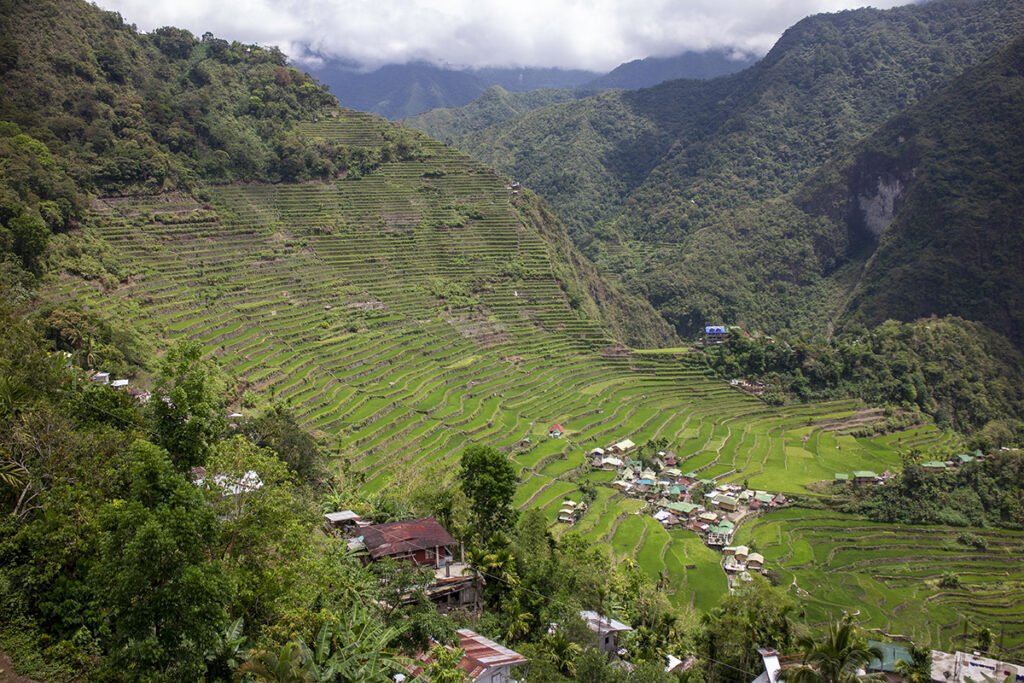

An approximately forty-five-minute trek from Batad’s Saddle Point culminates in a panoramic experience of Batad’s majestic rice terraces, one of the most well-preserved in the Philippines. Our lodging for the weekend—in one of the restored baluys or Ifugao house—is located on the crest of the hill seen here to the bottom right of the photo. This is also the site where the Pahang took place.
Header: Batad village proper, situated on the lower terraces, is today mostly composed of buildings built with simple and modern construction techniques yet largely non-descript in cultural or historical reference. An initiative by a major paint sponsor attempted to bring some coherence to the appearance of this collection of buildings, with walls painted in yellow and roofs in green, presumably to also blend in with the changing color of the terraces throughout rice growing and harvest seasons. Among these are the last few indigenous baluy huts, which hark back to the way life was before modernization. Concerning baluy owners shifting to using corrugated steel instead of the traditional cogon roof, Bermejo describes, “the entire body of knowledge of crafting the frame and weaving of the cogon will be lost.” Indeed, as more parts of the baluy are replaced with modern and expedient materials, Bermejo warns of the disappearance of more than just construction knowledge, but a significant part of the culture.
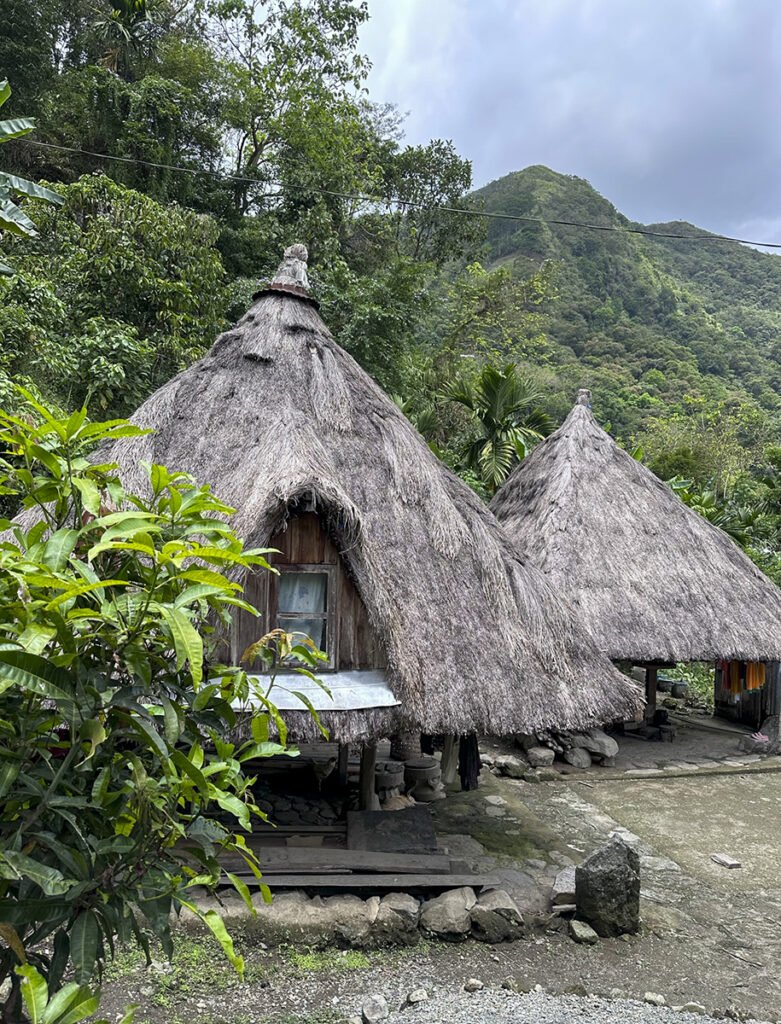

Of the remaining baluy structures, around twelve to fifteen baluys have been restored under the Batad Kadangyan Ethnic Lodges Project. As one hikes through the terraces, an encounter with a baluy in situ offers great insight as to how these dwellings were inhabited, both indoors and out. Its distinctive steep pyramidal roof acts as wholesome protection from the harshest of mountainous elements, while providing a comfortable microclimate within and underneath. Though the function may vary from baluy to baluy, its archetypal form performs the same among all.
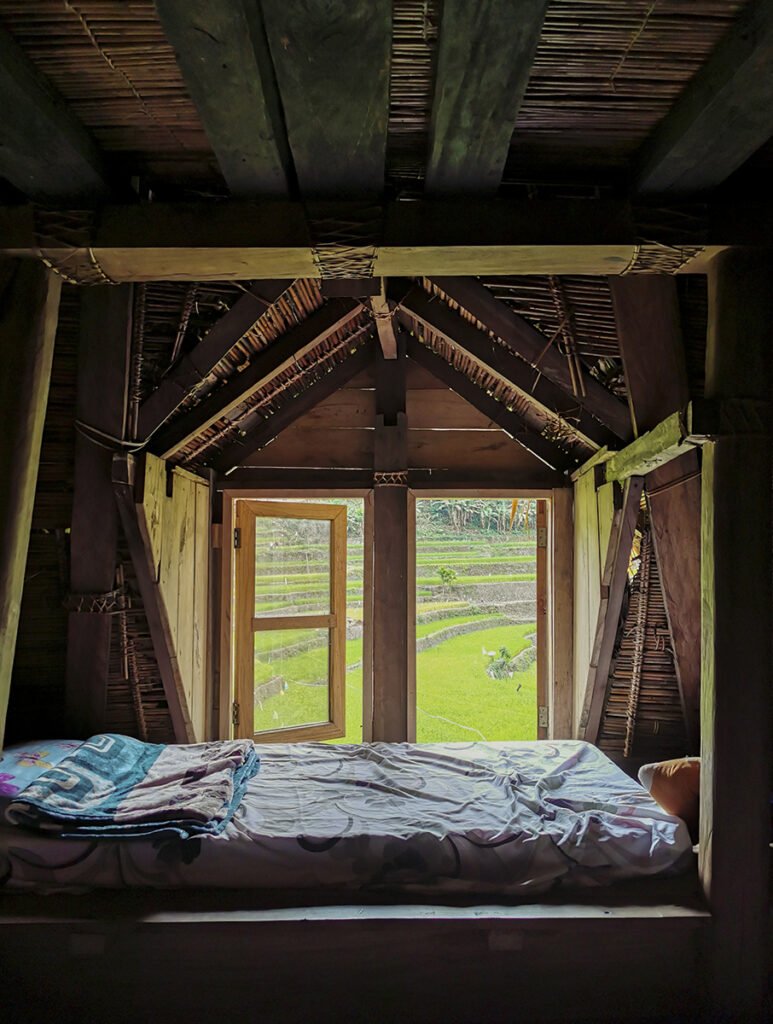

One of Macapagal’s early suggestions to the villagers was for the restored baluys to host tourists, thereby diversifying its usage and warranting its continued preservation beyond its traditional inhabitation. Dormer-style windows were added to the baluys for this purpose, but further refinements were required to the detailing of this portion as water seeped through. For the baluy that we stayed in, the outcome is a view unlike any other–akin to a gallery with the rice terraces unfurling in front of you in all directions.


The beam substructure props up and is interlocked with four diagonal posts from its corners, and all the way through the interior of the house through to the apex of the roof. Affixed with a mortise and tenon system, forgoing the use of any nails, the house can be dismantled, its parts moved, and erected elsewhere if need be.
The seated bul’ul (right photo) figure, used as a symbol to guard the rice crop, is commonly found in Cordillera, as well as the lizard (top), which is known for eating insects and, therefore, known as a protector of the rice crop too.
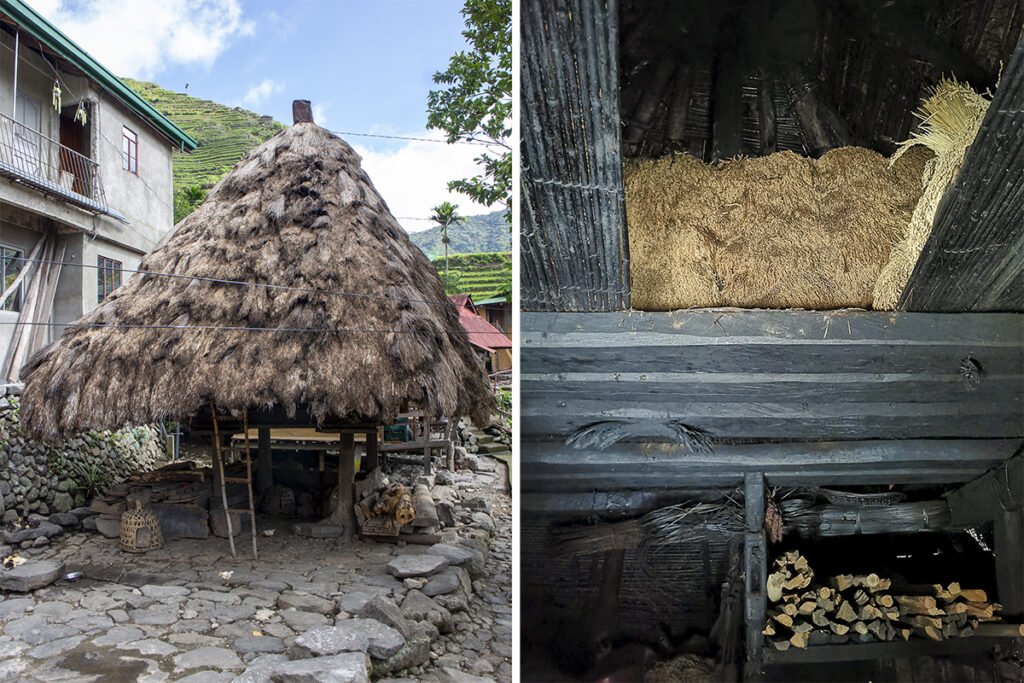

One of the traditional uses of the baluy is as a rice store. In this guise, the baluy is windowless and completely dark—any light coming through can potentially degrade the palay (unhusked rice) inside. The interior is also frequently smoked to deter pests and eliminate any moisture which could be detrimental to the rice stock. The palay is stored above the ceiling (right photo), with the area to sort the palay being on the hut floor, with one of the corners used as a cooking area.
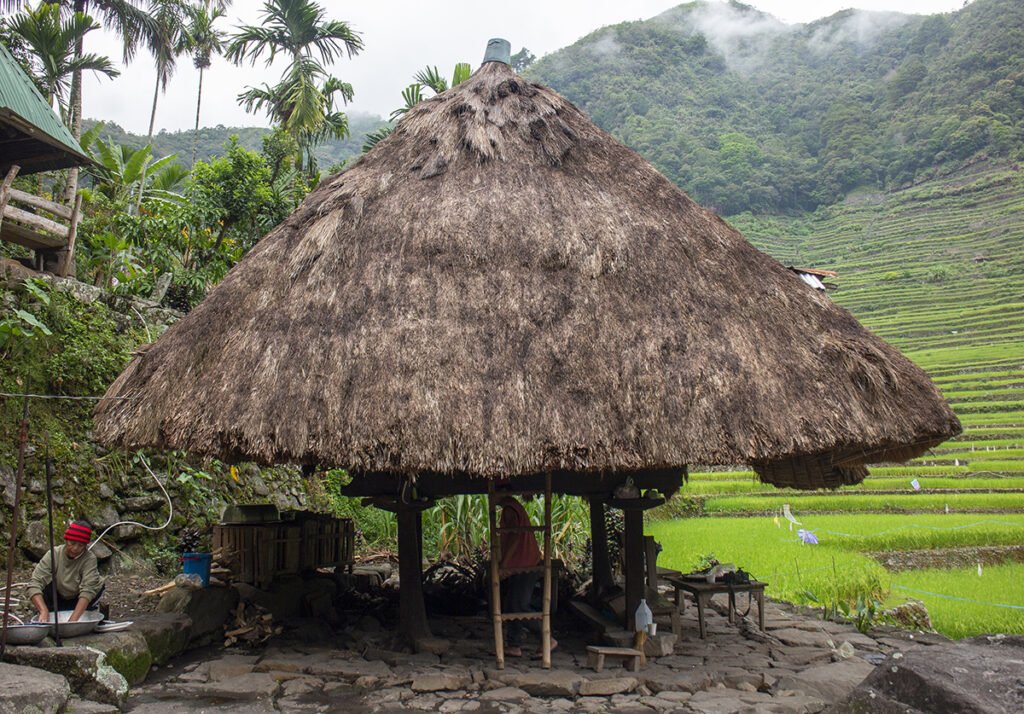

This is one of the pair of baluys that was first restored by Macapagal back in 2007. They both flank the outdoor area where the Pahang was to be performed. Macapagal and Bermejo both explained that the four main load-bearing posts and the main structural beams of the baluy come from trees that grow at the top of the mountains. “If a tree had fallen for whatever reason, then it wouldn’t be picked to be used for the parts of the house,” highlighted Bermejo. The villagers believed the strength of these members is derived from its sturdiness in its original habitat. Macapagal also pointed out that the core of the wood that contained the most resin or sap was used as these warded off termites. No specific type of wood is used, but there are two or three varieties, including amugawan and narra.
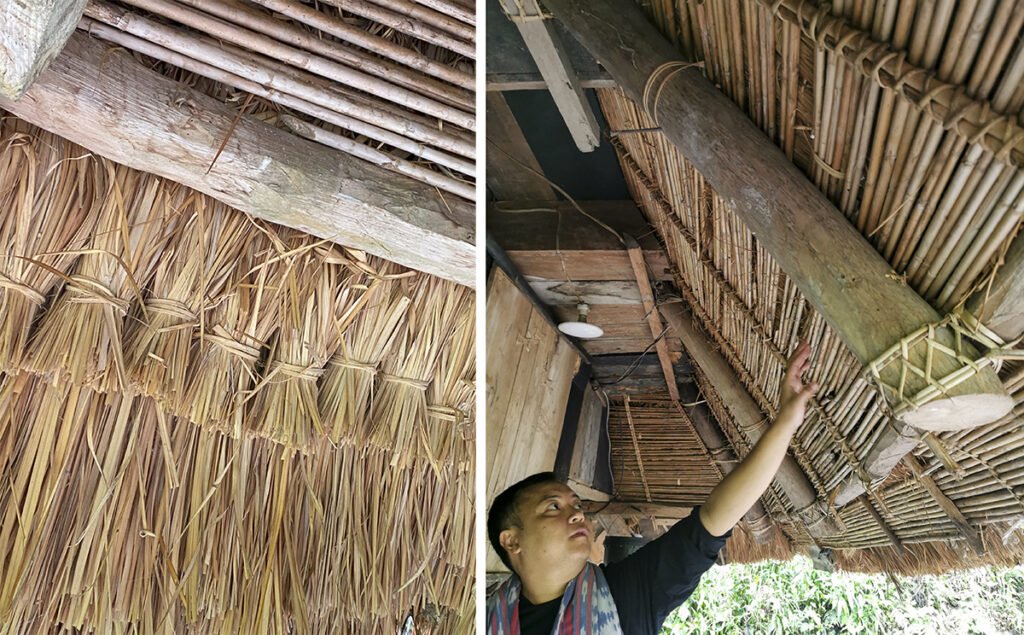

The shift in material usage and their contrasting properties is nowhere more pronounced than for the roof of the baluy. Bermejo lamented the recent preference to use steel roofing: “When it’s hot outside, it becomes hot inside, and when it’s cold, it also doesn’t retain heat well. When it rains, it’s very noisy.” The original cogon roof, however, has the remarkable ability to regulate the thermal comfort inside the baluy whether hot or cool, while also insulating it from the sound of the rain too. Macapagal emphasized that cogon is becoming increasingly difficult to source nowadays. Farmers tend to plant higher-value crops instead, so the practice of growing and supplying cogon for roofing is becoming ever more limited.
Once the roof frame and dowel rod lattice work are in place, the cogon bunches are laid on top. Each layer has sufficient overlap to provide strength to the overall roofing and seals the roof from the elements affecting the interior of the house.
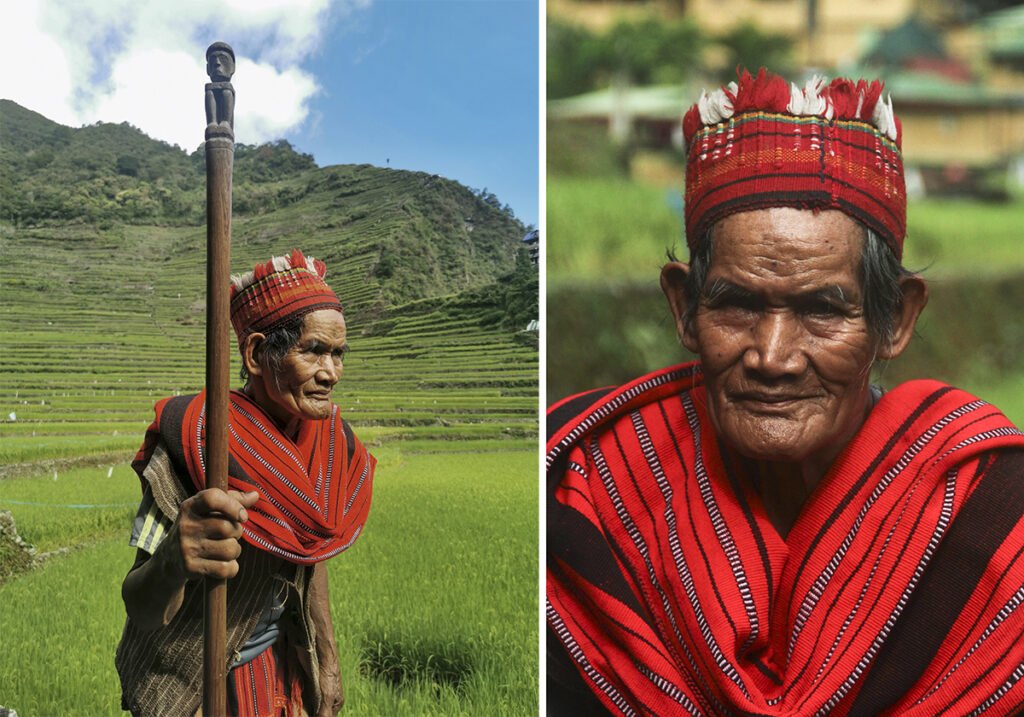

The last mumba’ih of Batad, Apo Buy-Ah, who is over one-hundred years old, arrived dressed in full Ifugao garb for the Pahang. According to Apo Buy-Ah, he had an auntie who called him to learn the rituals when he was young (called to burning feathers of chicken, for example), thereby being the only one at the time interested to receive the knowledge and continue this native practice. As the last of a dying breed, he is the only living link to the genealogy and the only one who can channel messages from the ancestors to the living descendants today. He has no children and sadly acknowledges that there is no one today in Batad willing to continue the rituals. His four protégés are leaders of the Christian church, and more often than not, Christians are the ones conducting the house blessings nowadays.
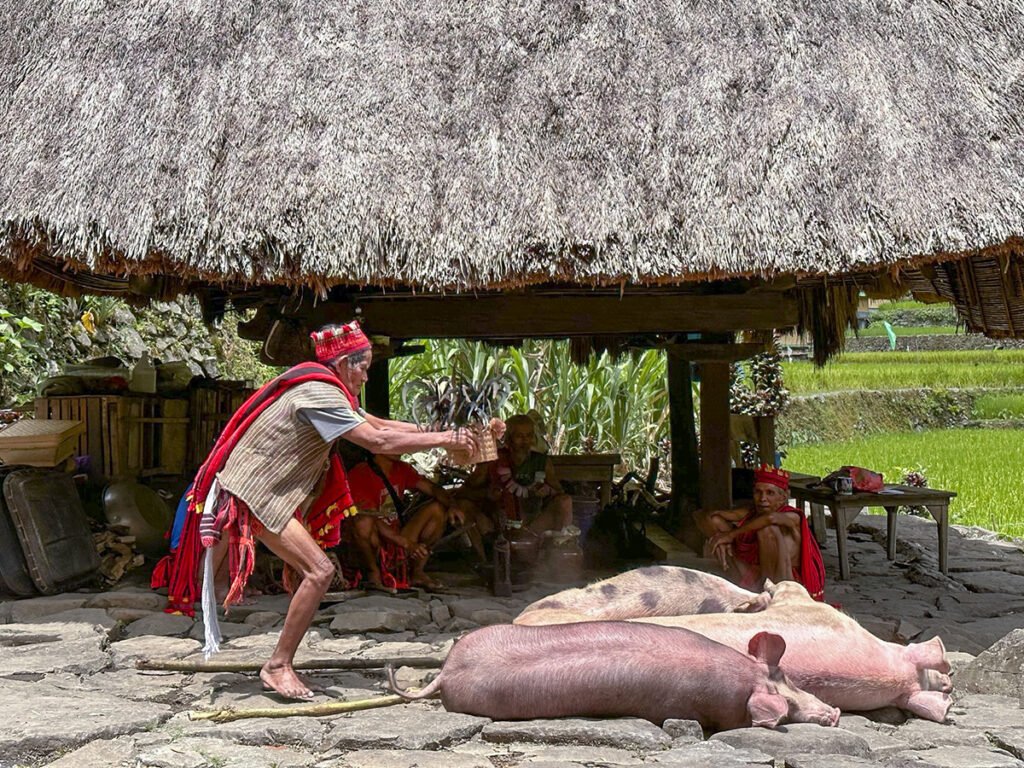

After an extended period of waiting, the Pahang finally commenced inside the house before descending to the ground and continuing outdoors. The day-long ritual involves summoning all the ancestors from their genealogy to participate in the Pahang. Apo Buy-Ah (pictured here) dances to the ceremonial group’s indigenous rhythmic instrumentals around the sacrificial livestock. Another younger mumba’ih, Apo Umanggan, who is seventy years old (right, seated), came from another barangay to take part in this Pahang since Apo Buy-Ah is the only one left in Batad.
One of the highlights of the Pahang is the dance by three of the mumba’ih group around the livestock, a few passages before the act of sacrifice. It is during these sacred moments that the entire place seemed to elevate to an other-worldliness so rarely seen in the Philippines.
As this was billed as one of the last (if not, the last) opportunity to witness a ritual in this form, numerous groups (including travel photographers, videographers, a cooking show host, journalists, professors, and students from the UP Asian Institute of Tourism) were invited to report and officially document the Pahang. The challenge to capture a flavor of the occasion for posterity is evident to see.


If there was any demonstration of the function of the deep and low overhang of the cogon roofing in ceremonial mode, this would be it. This is the Ambojnon family baluy where the touring group gathered for breakfast, and subsequently became the front row for the Pahang.
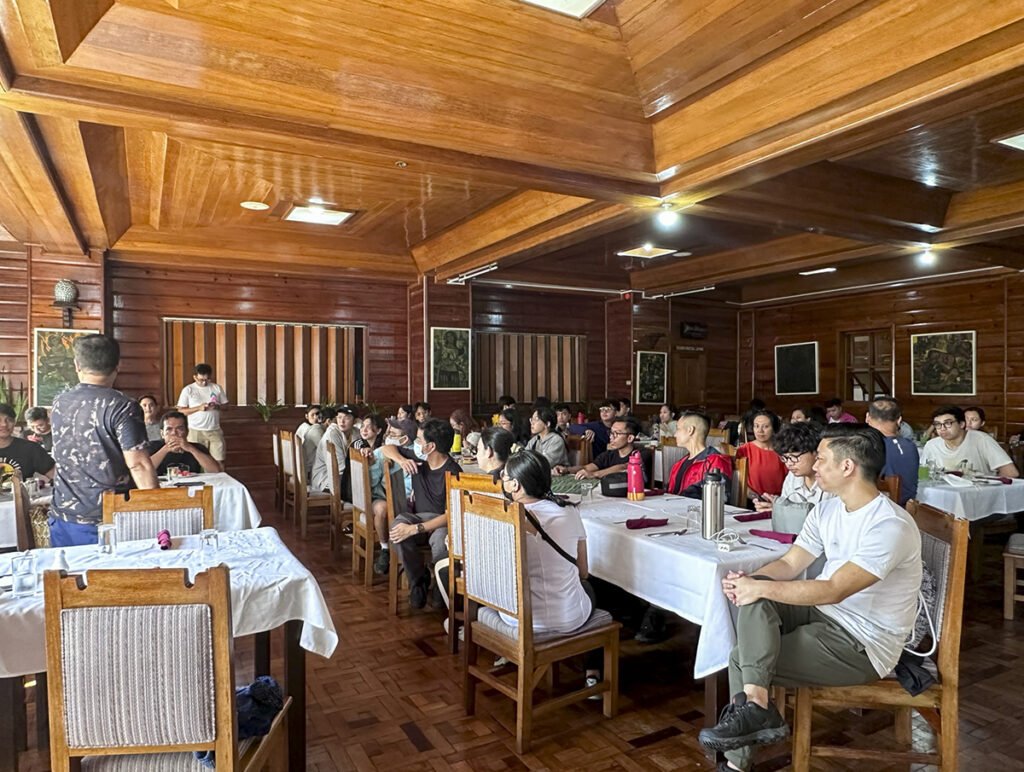

Rewind back to the first morning on Saturday 13th May. Macapagal (left, back turned) introduced the various visiting groups to the Batad Kadangyan Ethnic Lodges Project after breakfast at the Banaue Hotel and Youth Hostel.
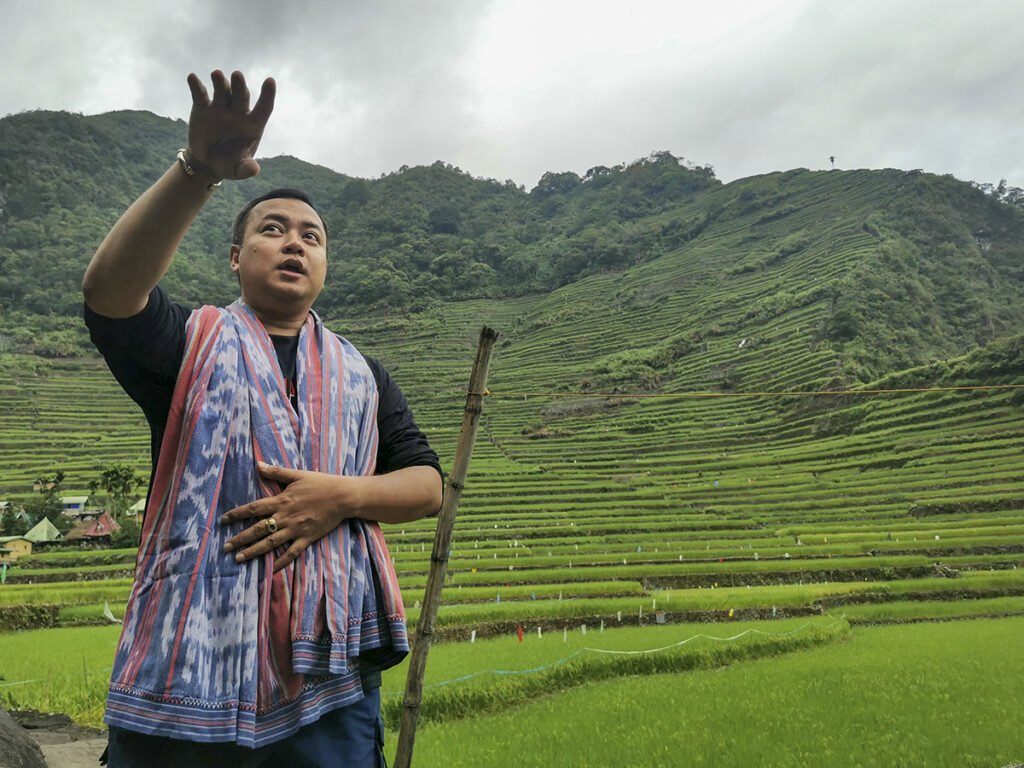

Raymond Macapagal giving early risers, on the morning of Sunday 14th May 2023, further pretext to the Pahang. Together with Raoul Bermejo and local artist and photographer, Ruel, they all shared very specific insights related to the construction and design of the baluys in the context of the Cordilleran peoples’ belief system and mountainous climate.


The traveling group (left to right): Lawrence Malangis, Merlyn (the owner of the inn that most of BAAD Studio stayed in), Connie Buta-Cunag, Jearon Sapacio, Francis Gerard, Carmel Navarro, Clarysse Zabat, Brandon Ang, Kiezl Zalvador, Lawrence Carlos (rear), Alec Soliman, James (driver), Amorhalino (experienced mountain tour guide). The baluy in the background is the inn owner’s rice storage. •
Kanto would like to thank An Bermejo, Raoul Bermejo, and Rae Macapagal for the invitation to participate in this one-of-a-kind ritual.
Support and cooperation for future restoration projects are also very welcome. More information about the house restorations may be found on their Facebook page: Batad Kadangyan Ethnic Lodges Project.

